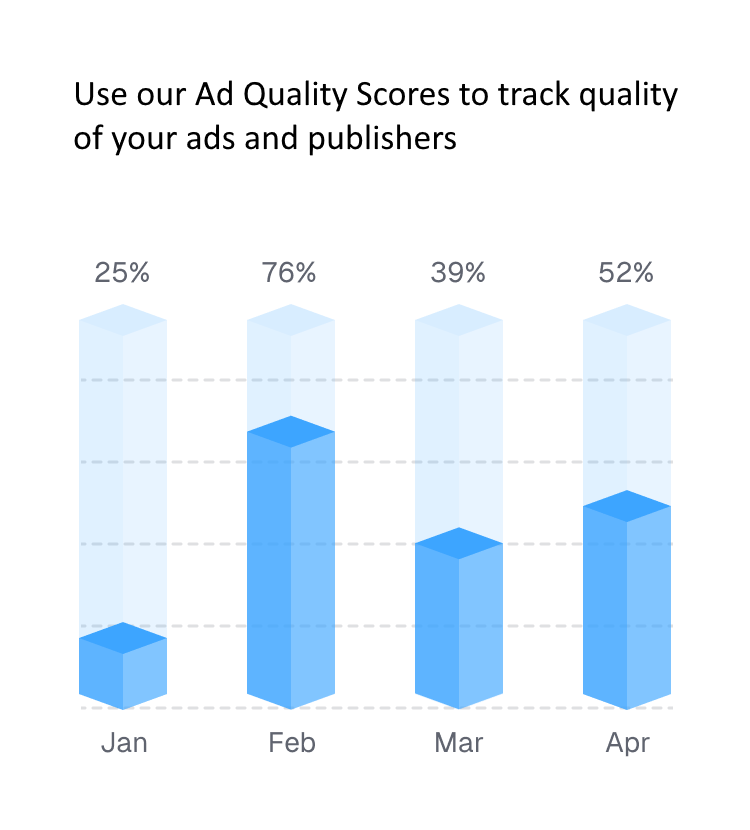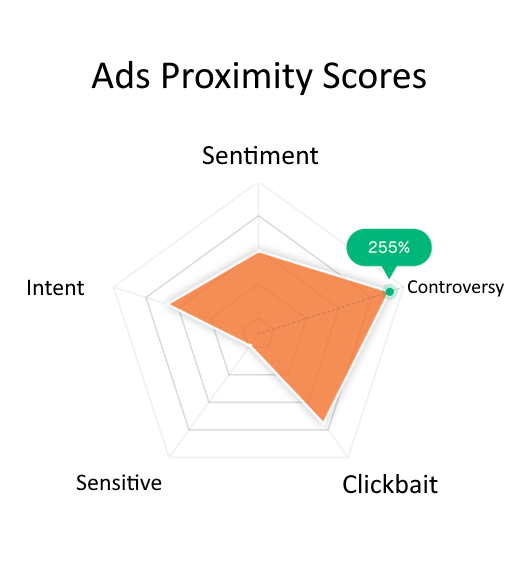The Contextual Advertising Renaissance
Digital advertising stands at an inflection point. The impending deprecation of third-party cookies, combined with privacy regulations like GDPR and CCPA, has fundamentally disrupted behavioral targeting strategies that powered digital advertising for two decades. This shift isn't a setback—it's an opportunity to return to advertising fundamentals enhanced by modern AI capabilities.
Contextual advertising, where ads are matched to page content rather than user behavior, is experiencing a renaissance. Early contextual advertising relied on simple keyword matching, delivering mediocre results that pushed the industry toward behavioral tracking. Today's contextual targeting, powered by advanced natural language processing and machine learning, delivers relevance that matches or exceeds behavioral approaches while respecting user privacy.
Why Contextual Targeting is Winning
The Privacy Imperative: With 86% of consumers concerned about data privacy and major browsers blocking third-party cookies, behavioral targeting faces an uncertain future. Contextual targeting requires no personal data collection, making it inherently privacy-compliant and future-proof against evolving regulations.
Performance Parity: Modern contextual targeting powered by AI delivers comparable or superior performance to behavioral methods. Studies show contextual ads can achieve 50% higher brand recall and 43% better purchase intent versus behavioral ads, as they reach users at the moment of relevance.
Brand Safety: Contextual targeting provides inherent brand safety advantages. Ads are matched to content, ensuring they appear in appropriate environments automatically. This control is increasingly valuable as brand safety concerns rise.
Cost Efficiency: Without dependency on expensive data management platforms, audience data licensing, and complex attribution systems, contextual targeting offers superior economics. Advertisers report 20-40% cost reductions while maintaining performance.
Challenges in Modern Contextual Advertising
While contextual targeting offers clear advantages, implementation complexity has historically limited adoption:
- Scale Requirements: Billions of daily ad impressions require real-time content analysis at massive scale with sub-100ms latency
- Content Complexity: Modern websites contain dynamic content, user-generated sections, and multimedia requiring sophisticated analysis beyond keyword matching
- Nuance Detection: Effective targeting requires understanding context and sentiment—news about a product category differs from promotional content
- Multi-Format Challenge: Advertisers need consistent targeting across display, video, native, audio, and emerging ad formats
- Measurement Gap: Attribution and measurement systems built for behavioral targeting don't translate directly to contextual approaches

How Our API Powers Contextual Targeting
Our Website Categorization API provides the sophisticated content intelligence required for effective contextual advertising at scale:
1. Deep Content Understanding
Our API goes far beyond keywords to comprehend page meaning and context:
- IAB Taxonomy Classification: Categorize content across 700+ standardized IAB categories enabling precise ad-to-content matching
- Semantic Analysis: Natural language processing understands topics, themes, and context—distinguishing educational content from commercial
- Entity Extraction: Identify brands, products, people, locations, and organizations mentioned in content for ultra-targeted placement
- Sentiment Analysis: Understand emotional tone ensuring ads appear in appropriate sentiment contexts
- Intent Detection: Identify user intent signals (research vs. purchase vs. entertainment) for strategic ad placement
2. Real-Time Processing at Scale
Our infrastructure supports the demands of programmatic advertising:
- Sub-100ms response times enabling real-time bidding integration
- 99.9% uptime SLA ensuring consistent availability for mission-critical advertising
- Unlimited scalability supporting billions of daily requests
- Global edge deployment minimizing latency worldwide
- Offline database option for ultra-low latency requirements
3. Multi-Dimensional Targeting Signals
Beyond basic categorization, our API provides rich targeting signals:
- Buyer Personas: Identify likely audience segments from content—targeting tech enthusiasts, business professionals, parents, etc.
- Content Quality Scores: Evaluate page quality, trustworthiness, and professional standards for premium placement strategies
- Keyword Extraction: Surface relevant keywords for additional targeting refinement
- Topic Modeling: Identify granular sub-topics within broader categories
- Competitive Context: Detect competitor mentions enabling strategic conquesting opportunities
Contextual Targeting Performance
Powering contextual campaigns worldwide
Average Response Time
IAB Categories
API Uptime
Languages Supported
Key Features for Contextual Targeting
Pre-Bid Categorization
Integrate directly with DSPs and SSPs to categorize inventory before bidding, enabling efficient spend allocation on contextually relevant placements.
Dynamic Creative Optimization
Match creative variations to page content automatically—show running shoe ads on fitness content, dress shoes on business content.
Negative Targeting
Exclude content categories, sentiments, or topics where your brand shouldn't appear, combining contextual relevance with brand safety.
Competitive Intelligence
Detect competitor mentions and brand contexts, enabling strategic conquesting campaigns that reach audiences considering alternatives.
Audience Inference
Infer likely audience characteristics from content consumption—reaching target demographics without individual tracking or profiling.
Cross-Format Consistency
Apply consistent targeting logic across display, video, native, and audio advertising for unified campaign execution.
Implementation Strategies
DSP/SSP Integration: Advertising platforms integrate our API to enhance inventory with contextual signals. This enables advertisers to build contextual targeting segments, bid strategically based on content relevance, and optimize campaigns around high-performing contexts. Major DSPs report 30-50% improvement in campaign performance after implementing sophisticated contextual targeting.
Publisher Monetization: Publishers use our categorization to segment inventory for programmatic selling, creating premium contextual packages that command higher CPMs. A technology publisher might create "AI/Machine Learning" inventory segments that tech advertisers pay premiums to reach.
Agency Trading Desks: Media agencies leverage our API to build proprietary contextual targeting strategies, differentiating their offerings and driving superior client results through intelligent content matching.
Advanced Use Cases
Moment-Based Marketing: Identify content contexts indicating specific consumer moments—planning a vacation, researching a purchase, seeking entertainment. Deliver ads matched to these micro-moments when relevance peaks.
Seasonal Contextualization: Automatically adjust contextual targeting for seasonal relevance. Holiday shopping content becomes prime inventory for retail advertisers in Q4, tax content reaches finance advertisers in early spring.
Event-Triggered Targeting: Detect trending topics and emerging news stories in real-time, enabling advertisers to capitalize on cultural moments with contextually relevant messaging.
Negative Sentiment Avoidance: Beyond brand safety, use sentiment analysis to avoid placing ads in negative emotional contexts even when content is technically appropriate. Luxury brands avoid tragedy news; travel advertisers skip natural disaster coverage.

Programmatic Advertising Applications
Pre-Bid Optimization
Integrate with demand-side platforms to analyze and categorize bid requests before bidding decisions:
- Filter inventory to only contextually relevant opportunities
- Adjust bid prices based on contextual relevance scores
- Apply dynamic floor prices on premium contextual inventory
- Build proprietary contextual allowlists and blocklists
- Combine contextual with remaining first-party data for precision
Deal ID Creation
Publishers use our categorization to create premium deal IDs for private marketplace transactions:
- Package inventory by granular contextual segments
- Create audience proxies based on content consumption patterns
- Offer brand-safe, contextually relevant packages to premium buyers
- Command higher CPMs through superior targeting capabilities
Post-Bid Verification
Verify that delivered impressions match contextual specifications:
- Confirm ads appeared in promised contextual environments
- Generate contextual delivery reports for campaign optimization
- Identify discrepancies between pre-bid and actual contexts
- Support makegoods and reconciliation for misdelivered impressions
Industry-Specific Applications
E-Commerce Retail
Retailers use contextual targeting to reach shoppers at high-intent moments:
- Target product reviews and comparison content where purchase decisions form
- Reach how-to and tutorial content for related product promotion
- Identify gift-giving content for seasonal retail campaigns
- Detect unboxing and product showcase videos for retargeting
Financial Services
Banks and financial institutions leverage contextual signals for compliant, effective advertising:
- Target mortgage ads to real estate and home improvement content
- Reach investment content for wealth management services
- Place insurance ads near life event content (weddings, babies, home buying)
- Target business financing ads to entrepreneurship and startup content
Automotive
Auto manufacturers and dealers use contextual intelligence for strategic placement:
- Target automotive review sites and car comparison content
- Reach lifestyle content aligned with brand positioning (luxury, adventure, family)
- Place ads near competitor reviews for conquest campaigns
- Target commuting, road trip, and travel content for awareness
Travel & Hospitality
Travel brands reach audiences during trip planning and inspiration phases:
- Target destination guides and travel inspiration content
- Reach lifestyle content suggesting wanderlust (adventure sports, food culture)
- Place ads near event calendars and festival guides
- Target business travel content for corporate travel programs

Measurement & Optimization
Performance Metrics
Contextual campaigns enable new measurement approaches:
- Context-Level Performance: Analyze which content categories drive best engagement and conversion
- Sentiment Correlation: Understand how content sentiment impacts ad performance
- Quality Score Impact: Measure performance difference between premium and standard inventory
- Topic Refinement: Identify high-performing sub-topics within broader categories
- Competitive Context Analysis: Track performance of ads near competitor mentions
Optimization Strategies
Our categorization data enables sophisticated optimization:
- Build machine learning models predicting performance from contextual signals
- Automatically adjust bids based on content category performance history
- Dynamically update contextual targeting parameters as campaign learns
- Identify and scale best-performing content contexts
- Detect underperforming contexts for exclusion or bid reduction
Attribution Approaches
Contextual advertising requires adapted attribution methods:
- Content path analysis tracking typical content consumption journey to conversion
- Incrementality testing measuring contextual impact versus control groups
- Brand lift studies quantifying awareness and consideration improvements
- Statistical modeling inferring causal relationships from aggregated data
ROI & Business Value
Direct Performance Gains
- Higher Engagement: Contextually relevant ads show 30-50% higher click-through rates
- Improved Conversion: Ads matched to content intent deliver 25-40% better conversion rates
- Brand Recall: Contextual placement drives 50% higher brand recall versus behavioral methods
- Lower CPAs: Better targeting efficiency reduces cost-per-acquisition by 20-35%
Strategic Advantages
- Future-Proof Strategy: Contextual targeting remains effective as privacy regulations tighten
- Consumer Trust: Privacy-friendly approach enhances brand perception with conscious consumers
- Regulatory Compliance: No personal data collection eliminates GDPR, CCPA compliance complexity
- Platform Independence: Works across all environments including Safari and privacy-focused browsers
Cost Efficiency
- Eliminate expensive audience data licensing fees
- Reduce data management platform costs and complexity
- Lower technical infrastructure requirements versus behavioral systems
- Simplify compliance and legal overhead
Power Your Contextual Advertising
Join leading advertisers and platforms leveraging contextual intelligence for privacy-first performance.
